Nutrient Declines in Fruits and Vegetables
Growing vegetables is really quite simple. You put the seeds or transplants into sunny ground, you water and weed, and then you harvest your bounty. For that small effort, you can put on your plate food that is organically, sustainably, and (very) locally grown. Perhaps even richer in nutrients than food you can buy.
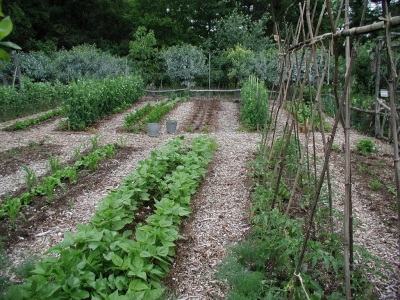
Studies over the past 15 or so years have documented a general decline in nutrients in our fruits and vegetables. Some people contend that our soils have been mined for their nutrients, worn out from poor farming, and therefore no longer able to provide us with nutritious food. The cure, according to these “experts,” is to sprinkle mineral-rich rock powders on the soil to replenish and rebalance that which has been lost. It all sounds very logical.
You might have sensed a big “but” looming. Here it is: But . . . further studies have pinned that nutrient decline on a dilution effect from increased yields. Pump up production with nitrogen fertilizer and water, or by breeding for increased yields, and nutrient concentrations decline; it’s as simple as that.
The final nail in the “worn out soil” coffin comes from side-by-side plantings of low- and high-yielding varieties of specific vegetables. The higher yielding varieties end up with lower concentrations of minerals and protein. The problem, then, if there is one, can be blamed on breeding and farming practices aimed at producing more bulk.
But . . .
I’m not concerned with nutrient decline in my own garden. First of all, I’ve chosen the varieties I grow — Blue Lake beans, Cherokee Purple tomatoes, Lincoln peas, Early Jersey Wakefield cabbage, Ashmead’s Kernel apple, and Fallgold raspberry, as examples — with
one thing in mind: flavor! 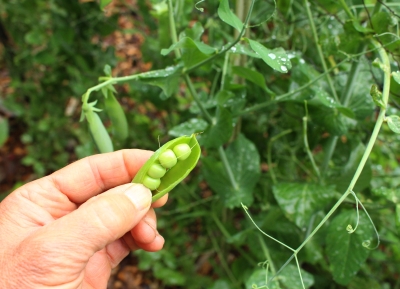 It just so happens that the most flavorful fruit and vegetable varieties are ones that have been around a long time. Yields may not be heavy, but these varieties are rich in flavor. (And perhaps nutrients. Anyway,
It just so happens that the most flavorful fruit and vegetable varieties are ones that have been around a long time. Yields may not be heavy, but these varieties are rich in flavor. (And perhaps nutrients. Anyway,
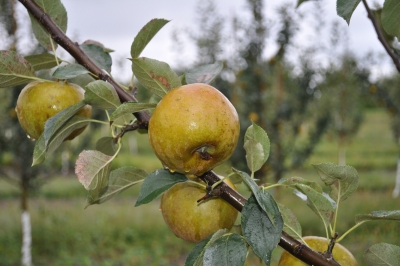
Ashmead’s Kernel apple
if something doesn’t taste that good, I’m not going to eat much of it, so it’s irrelevant how high it is in nutrients.)
I’m also not concerned with nutrient decline because I don’t push yields to the max with repeated applications of soluble, nitrogen-rich fertilizers. My soil management is simple: One inch of compost per year spread on top of the ground of permanent vegetable beds; compost, wood chips, hay, and/or leaves around my fruit plants. As these organic materials decompose, nitrogen and other essential nutrients are bled slowly into the soil only in response to warm temperatures and moisture, the same environment that spurs plant growth.

That compost is not serving up only nitrogen to my plants, or even just the big three nutrients, nitrogen, phosphorus, and potassium. Into my compost goes orange peels from Florida, avocado skins from California, and other kitchen waste, garden trimmings, some weedy hay, and, occasionally, horse manure. So the ground gets a wide variety of organic materials that, in turn, feed the compost and, in turn, feed the soil and the plants a wide spectrum of nutrients. And just to make sure that my soil lacks nothing, I occasionally sprinkle some powdered kelp around.
Herbs for Flavor, in Winter, Not Nutrition
Even if herbs were rich in nutrients, their nutritional contribution to our diets would be minimal because of the relatively small amounts actually eaten. But the small amounts needed to pizazz up a tomato sauce or frittata in winter also make herbs ideal for growing indoors in winter. A little goes a long way.
The basic problem is that many cooking herbs are Mediterranean plants that, of course, thrive best in Mediterranean conditions, with bright hot sun beating down on them. So the expectations and the reality of a windowsill herb garden often diverge. Forget about growing basil or oregano in January.
With that said, I nominate two herbs perfect for indoor growing in winter. The first is bay laurel. This plant, a small tree trained as a “standard,” has spent the last 29(!) winters near a sunny window. A freshly plucked leaf brings to soups and stews a flavor only hinted at by the dried leaf; to me, in addition to its distinctive flavor I sense an oleaginous quality hinting of olive oil.
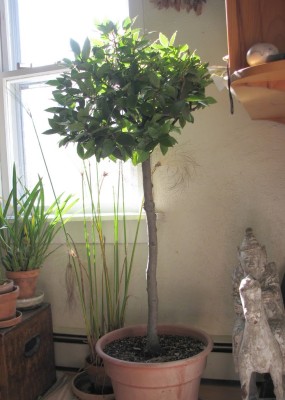
Bay laurel
The second herb, rosemary, is my favorite for indoor growing. Rosemary tolerates being trained as a standard or fanciful topiary; it looks equally good left to its own devices to grow as a relaxed, small shrub. (Mine are trained as standards.) Pinching off a few stem tips
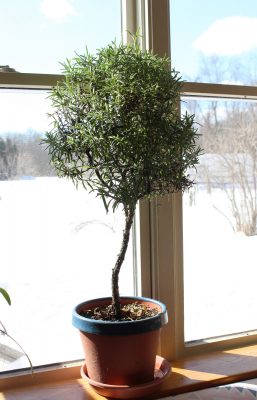
Small, indoor rosemary “tree”
with leaves not only puts some warm, Mediterranean sunshine into tomato sauce but also encourages growth of side shoots to keep the plant dense with shoots and leaves.
Once spring warmth has settled in around here, the bay laurel and rosemary will move outside to bask in the full force of Hudson Valley sunshine.
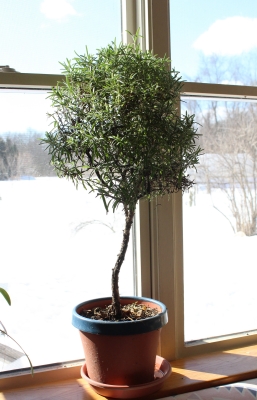



 It just so happens that the most flavorful fruit and vegetable varieties are ones that have been around a long time. Yields may not be heavy, but these varieties are rich in flavor. (And perhaps nutrients. Anyway,
It just so happens that the most flavorful fruit and vegetable varieties are ones that have been around a long time. Yields may not be heavy, but these varieties are rich in flavor. (And perhaps nutrients. Anyway,



